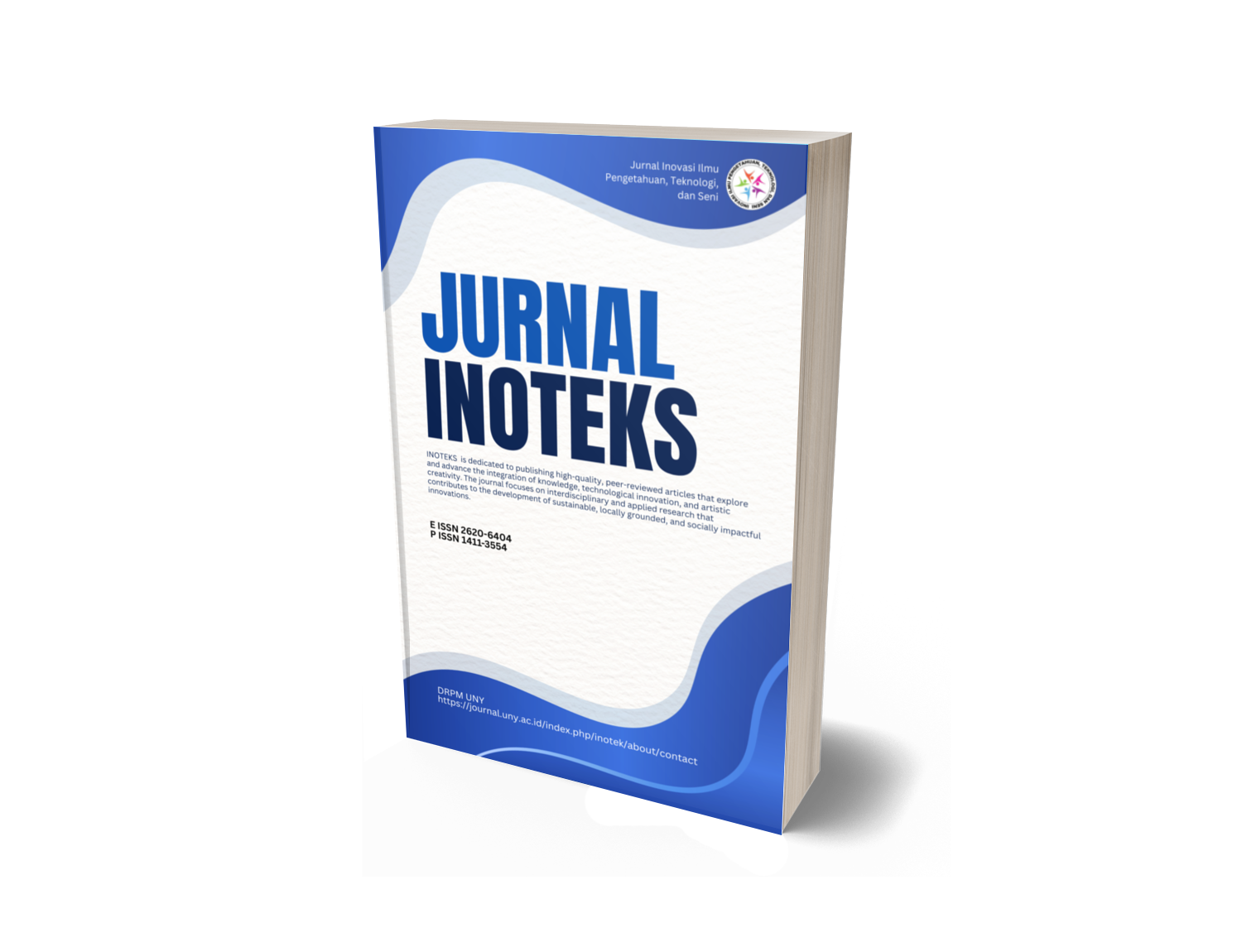INOVASI PEMBELAJARAN SASTRA JAWA BERBASIS KOMPETENSI MELALUI MEDIA WAYANG KANCIL
DOI:
https://doi.org/10.21831/ino.v8i2.5214Abstract
Based on the analysis of the field situation there are some complaints by the elementary students to their parents that the local content subject of Javanese literature is hard to learn and is not interesting that it becomes something frightening them. That is why it is necessary to immediately found the way out that it is fun for them to learn the subject. Therefore, using the recent advancement of science and technology a competence based Javanese literature learning through the media of Wayang Kancil are introduced. The training is organized to answer the following questions: (1) What are the manifestations of the competence-based literature learning through the media of Wayang Kancil? and (2) To what extent the competence-based literature learning through the media of Wayang Kancil succeed to encourage the students in learning the subject of Javanese Literature?The target population are the elementary school teachers in Kulom Progo regency of Y ogyakarta. Each of the existing subdistricts sends two teachers that the total participants are 40 individuals. The activity are centered in Sanggar Kegiatan Belajar (SKB) Kulon Progo (Dinas Pendidikan Hall). It is conducted using the method of speech, discussion, exercise, and Wayang Kancil simulation.All of the 40 participants are able to practice the learning process using the Wayang Kancil. It may be initiated using story telling and also by singing a song. They succeed: (1) to chose or create an interesting story appropriate with the need of the elementary school students, (2) to make use of the language and various messages on good conduct that are to transfer to the students in the learning process through the media of the Wayang Kancil, and (3) to master the strategy in selecting the contextual stories in Kulon Progo. Subsequently, the participants are: (1) well-motivated in practicing and doing their job with the media of the Wayang Kancil, (2) with the pleasure willing to share their knowledge and skills with their colleagues in their respective districts, (3) all of them listen the tutorial, attending the
183
184
perform~nce of.the Way~ng Kanc~1 and in the same time appreciating it, (4) to pr~ctlce telh.ng Kanc~l story III tu:n using the media of the Wayang Kancil, (5! to smg Kancil song, Kancil poem reading appropriate with the psyc.hoiogical developmen.t ~f the .elementary school students, (6) to practice p~aYlllg~he Wayan~ Kancil III a SImple manner without any instrument, but dlrec~ly III t~e learning process, (7) to organize the simulation of the Wayang Kancil learning.
Key words: KBK, wayang kancil, Javanese literature
183
184
perform~nce of.the Way~ng Kanc~1 and in the same time appreciating it, (4) to pr~ctlce telh.ng Kanc~l story III tu:n using the media of the Wayang Kancil, (5! to smg Kancil song, Kancil poem reading appropriate with the psyc.hoiogical developmen.t ~f the .elementary school students, (6) to practice p~aYlllg~he Wayan~ Kancil III a SImple manner without any instrument, but dlrec~ly III t~e learning process, (7) to organize the simulation of the Wayang Kancil learning.
Key words: KBK, wayang kancil, Javanese literature
Downloads
How to Cite
Suroso, S., Suwardi, S., & Widayat, A. (2015). INOVASI PEMBELAJARAN SASTRA JAWA BERBASIS KOMPETENSI MELALUI MEDIA WAYANG KANCIL. INOTEKS: Jurnal Inovasi Ilmu Pengetahuan,Teknologi, Dan Seni, 8(2). https://doi.org/10.21831/ino.v8i2.5214
Issue
Section
Articles
Citation Check
License
- Authors certify that the work reported here has not been published before and contains no materials the publication of which would violate any copyright or other personal or proprietary right of any person or entity.
- Authors transfer or license the copyright of publishing to Jurnal Civics: Media Kajian Kewarganegaraan to publish the article in any media format, to share, to disseminate, to index, and to maximize the impact of the article in any databases.
- Authors hereby agree to transfer a copyright for publishing to Jurnal Civics: Media Kajian Kewarganegaraanas a Publisher of the manuscript.
- Authors reserve the following:
- all proprietary rights other than copyright such as patent rights;
- the right to use all or part of this article in future works of our own such as in books and lectures;
- use for presentation in a meeting or conference and distributing copies to attendees;
- use for internal training by author's company;
- distribution to colleagues for their research use;
- use in a subsequent compilation of the author's works;
- inclusion in a thesis or dissertation;
- reuse of portions or extracts from the article in other works (with full acknowledgement of final article);
- preparation of derivative works (other than commercial purposes) (with full acknowledgement of final article); and
- voluntary posting on open web sites operated by author or author's institution for scholarly purposes, but it should follow the open access license of Creative Common CC BY-NC-SA License.









